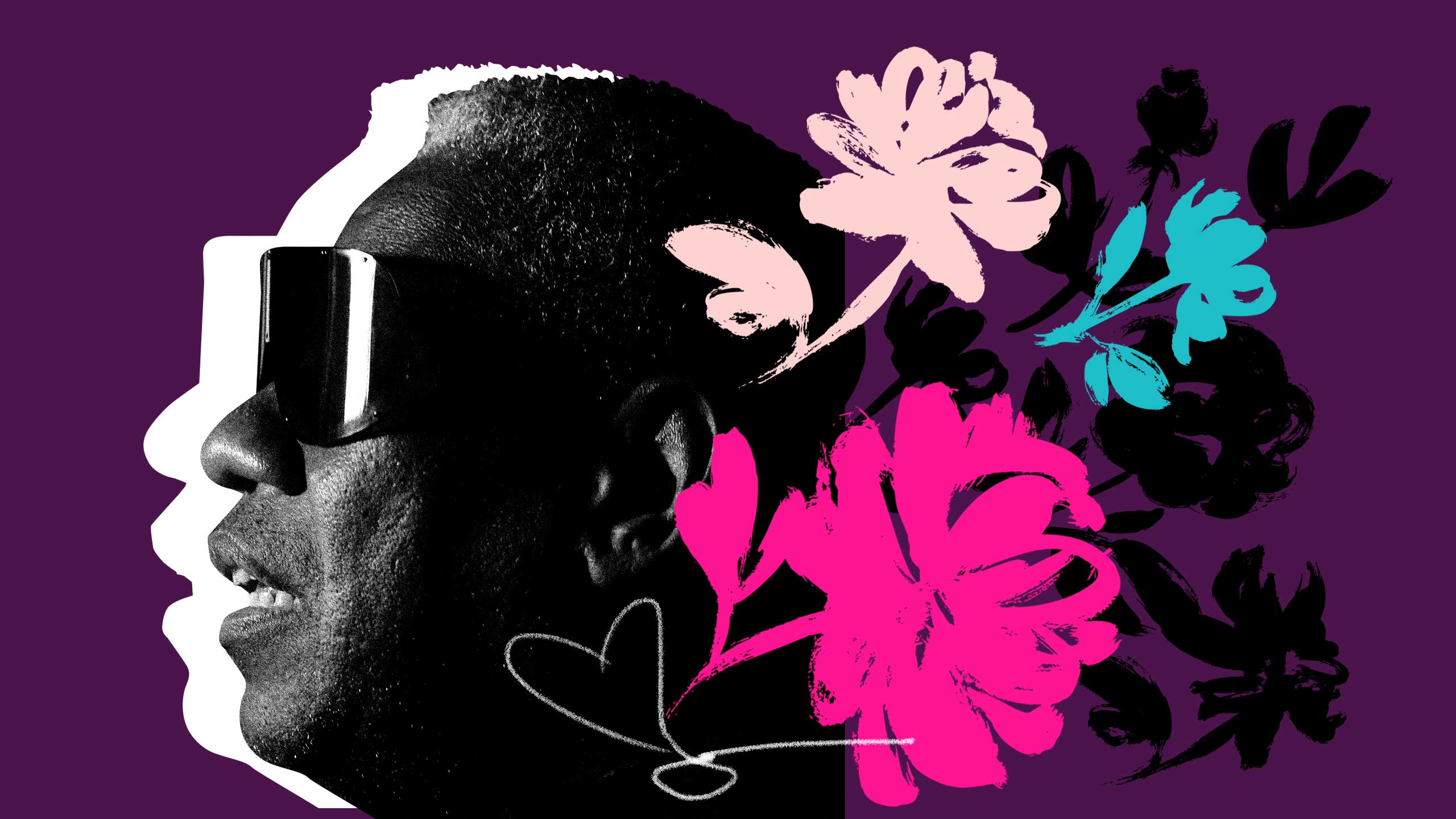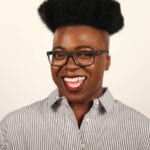I was surprised I cried that hard. Late Tuesday night, while scrolling Twitter and watching TV, I saw a headline from TMZ that stopped me in my tracks: “Vogue Legend André Leon Talley Dead at 73.”
I didn’t want to believe it. Even as TMZ continues to lead other media in announcing celebrity deaths, I hoped they were wrong. The journalist in me, forever looking for more reputable sources, feverishly refreshed my timeline in search of something that I considered more official. Instead of press mentions, I started seeing a host of “RIP” posts alongside photos of the industry titan.
My stomach convulsed as I tried to fight back tears. After tweeting “Be still my heart,” I paused the TV show I was watching, tossed my phone on the other side of the couch and started pacing my apartment. “This can’t be,” I said aloud to myself, coming up with every possible reason not to believe it. But I could feel myself slowly spiraling, crafting disbelief when there was no need to do so. Like molasses out of a jar, acceptance of what was likely fact slowly trickled from the corner of my eyes.
Sitting down, I grabbed my phone. I feverishly typed Talley’s name into Google. Before I could hit search, a friend texted me, “sending you love.” The dam burst. I cried an ugly cry—one that would put Viola Davis in Fences to shame! One of my earliest possibility models was dead.
I first discovered Talley’s brilliance when he joined America’s Next Top Model as a judge on cycle 14 of the reality modeling competition show created and hosted by Tyra Banks. Along with Miss J Alexander, the show’s runway diva coach extraordinaire, Talley, with his billowing caftans and larger-than-life personality gave me a glimmer of hope. At the time, I was just a “lil’ sissy boy from South Carolina with an imagination far beyond the confines of my Black and conservative lineage,” as I once wrote in the Los Angeles Times. Seeing both of these men confidently defiant in their authenticity “allowed me to imagine a world that accepted gender-bending Black folks while I still lived in one where manhood and masculinity were narrowly defined.”
Taken by how Talley judged the models—he weaved linguistic gold every episode in the form of brow-furrowing words like “salonista” and “dreckitude”—I took to the internet. It was there that I first learned his story. Born the grandchild of a sharecropper in the fall of 1948, he was raised by his grandmother, Binnie Francis Davis, in the American South at a time when it was still legally segregated. Davis worked as a cleaning lady at Duke University in Durham, North Carolina, and championed the old adage “Cleanliness is next to Godliness,” crafting a respectable home environment for Talley. He credited her with being the first person to teach him about luxury beyond expensive and extravagant things; even though they didn’t have much by contemporary standards, he had everything he needed. Every Sunday, after she baked him a pan of biscuits for breakfast, they went to church where he was introduced to some of his earliest examples of style. The aisles of a Black church were my first runway shows, too.
Talley’s passion for fashion started early, before he was a teen, when he discovered Vogue magazine at the library. Most activated by seeing Black people on those pages, like legendary models Patricia “Pat” Cleveland and Naomi Sims, he once said the images turned him on intellectually. John Fairchild’s The Fashionable Savages was another text that activated Talley’s imagination, triggering an early desire to experience the worlds that the former editor of Women’s Wear Daily and W magazine wrote about. After graduating high school, Talley studied French literature at North Carolina Central University, a historically Black college in Durham. He then went to Brown University, where he earned his master’s degree, also in French literature, and developed friendships with students at the neighbouring fashion school. Those relationships led to an unpaid apprenticeship under legendary Vogue editor Diana Vreeland who, having been impressed by Talley, got him a job at Andy Warhol’s Interview magazine. The rest is history, as they say.
“The aisles of a Black church were my first runway shows, too.”
Perhaps the most powerful Black person in fashion at one time—he was American Vogue’s fashion news director, then the publication’s first (and still only?) Black male creative director, and later, their editor-at-large—Talley was one of one. As a “lonely only,” in the words of producer Effie T. Brown, he stood out in a crowd. Yes, because he was a tall (six feet six inches), slender (then fat) Black man. But also because of his knowledge, in which he took so much pride. He was always one of the smartest people in the room, and those around him had no choice but to take notice. And he thrived, in spite of the racism and homophobia he experienced. (Though Talley never identified as gay, his effeminate and bombastic ways led people to believe otherwise, and the queer community adopted him as our own.)
I had three opportunities to tell Talley about his influence on me. The first and most impactful came while I was a film reporter at the Los Angeles Times in 2017. The day after his documentary, The Gospel According to André, premiered at the Toronto International Film Festival, I interviewed him about his life’s journey. Having fretted about what I’d wear, the questions I’d ask and how to give him the flowers I thought he was due, I was a bundle of nerves. When he sat down, he began by asking questions of me, surely struck by my Blackness in a sea of white reporters he’d been talking to that day as well as my intentionally-crafted ensemble: skin-tight, leather-esque pants, a two-tone Black and gray poncho, a pair of heels, my red eyeglasses and metal eyeglass chain.
As our interview ended, I told Talley about his impact on someone like me. Having a little breathing room in his schedule, he invited me to sit beside him. “A flurry of emotions, I spoke more personally about our shared backgrounds in Carolinian Baptist churches and what it means to rebuff society’s expectations as a gender nonconformer with his life as the blueprint,” I wrote at the time about our meeting.
“You’re really going to be André Leon Talley one day… but more evolved,” he said. I blushed, my nerves and anxiety rising to the surface in the form of antsy gesticulations and a sweaty forehead.
This memory came rushing back to me this week as I uncontrollably cried while waiting for an outlet other than TMZ to independently confirm the news of his death. Then I got a call from broadcast journalist and Los Angeles legend Beverly White of NBC. While her network had not yet confirmed Talley’s death, she knew that I admired him and wanted to see, pending confirmation, if I would do a quick news hit for the 11 p.m. show. I said yes.
I went to my bookshelf and grabbed my copy of Talley’s 2020 memoir, The Chiffon Trenches, in which he wrote about our first meeting. I read aloud to myself, my voice trembling with grief, page 262:
“In Tre’vell, I saw my younger self. In that moment, I flashed back vividly to interviewing Karl Lagerfeld at the Plaza in 1975. Now here I was, being asked questions about the documentary and my journey. Tre’vell’s intelligence and confidence in the delivery of his questions and the span of his fashion knowledge was breathtaking; it brought me to tears! My heart was full of pride and joy, as though I had just experienced the ‘Hallelujah’ chorus on a Sunday morning, in any missionary Baptist church.
“Tre’vell, only in his twenties, is already on the path to fame and recognition. While his stiletto wearing is remarkable, what’s more remarkable is his substance.” (Note: I use they/them pronouns now.)
After doing the interview with White, and a second with a producer for CBS This Morning, I turned on The Gospel According to André. (You can stream it on HBO Max.) By this time, my text messages and DMs were flooded with folks expressing their condolences. I put my phone on silent and fell asleep to the documentary, allowing Talley’s deeply feminine voice to soothe me. When I awoke, I typed out a thread on Twitter, using photos and videos that my former colleagues had taken of my interview with Talley to attempt to describe my relationship to him and his impact on me. I had to be on set for a TV show all day and thought this would be the best way to articulate my emotions.
I didn’t want to write this story at first. In fact, I turned down three commissions from top outlets because I didn’t feel up to it, emotionally, spiritually or physically. But as the day continued, my feelings changed. I kept replaying in my head the final two words Talley said to me as he left the Los Angeles Times studio at TIFF: “Keep going.”
At the time, I took that message to mean that I should keep working, keep learning and keep growing as a journalist. I turned it into a mantra—to keep existing as I am, in the fullness of my authentic self. Now, I hear “keep going” and think, “keep his legacy alive.”
And that legacy is a complicated one. Yes, he cast Naomi Campbell as Scarlett O’Hara in an all-Black reimagining of Gone With the Wind for a 1996 Vanity Fair editorial. Yes, he convinced Serena Williams to close out a young LaQuan Smith’s 2014 fashion show. Yes, he styled and fashion consulted for everyone from Barack and Michelle Obama to Jennifer Hudson. But for all he did to put cracks in ceilings in fashion and journalism, many of us Black folks in these spaces who’ve come after him feel like he could’ve done more. I’ve said before that such a critique is a valid one, and I still believe that.
Yet I also know that I would not be the journalist I am today without his example. Long before I ever decided to pursue journalism professionally, Talley showed me a way of moving through this industry as someone who doesn’t look, talk or act like the stereotypical version of a reporter. By just existing as he did, and allowing his talent, intellect and God-given gifts to make room for his success, I knew that the career I have (and the one I will have when it’s my time to go on to Glory) was possible. I’m so honoured to have had the chance to share space with Talley multiple times in my short life, and to have been able to give him his flowers while he could still smell them.


 Why you can trust Xtra
Why you can trust Xtra


